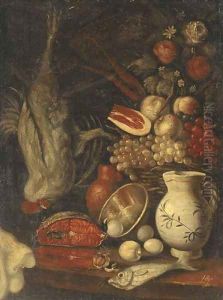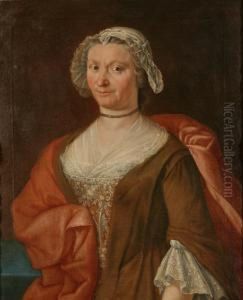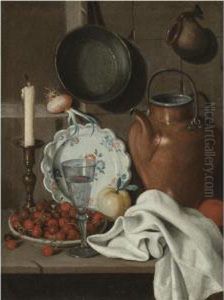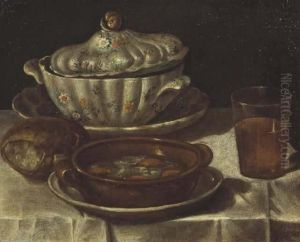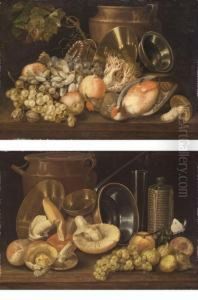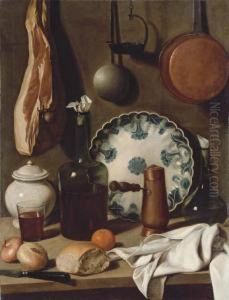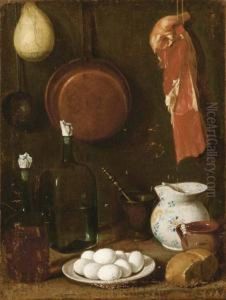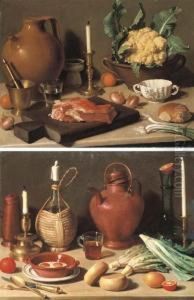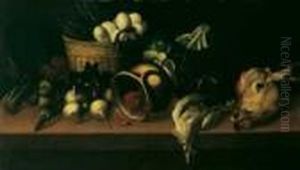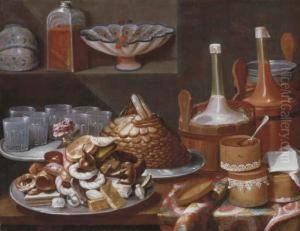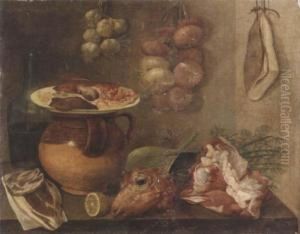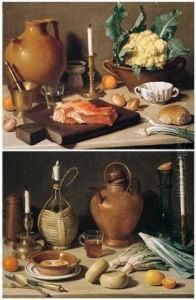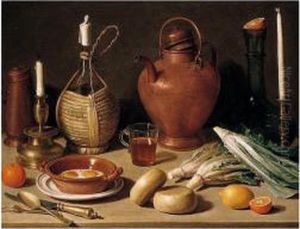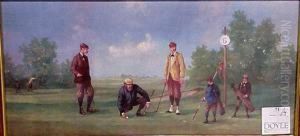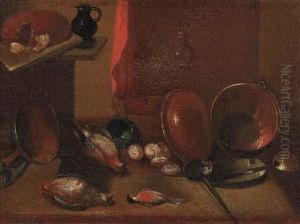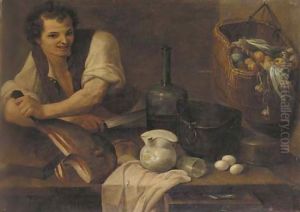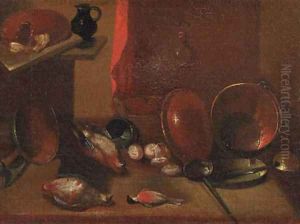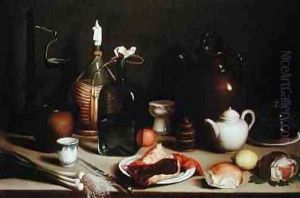Carlo Magini Paintings
Carlo Magini was an Italian painter born in Fano in 1720. He is known for his still life paintings, which are characterized by their meticulous attention to detail and the use of chiaroscuro to create depth and volume. Magini received his early artistic training in his hometown, but his style was heavily influenced by the Bolognese school of painting, which was prominent during his time.
Magini spent most of his life in Fano, where he worked on both religious and secular commissions. However, he is most celebrated for his still lifes, which often depicted kitchen scenes, food items, and household objects with a remarkable sense of realism. His compositions were simple yet powerful, often set against a dark background, allowing the subjects to emerge with a luminous quality.
Despite his talents, Carlo Magini did not achieve widespread fame during his lifetime. It was only later, particularly in the 20th century, that his work began to be appreciated for its contribution to the development of still life painting in Italy. His paintings can now be found in several important art collections and museums.
Magini's art is also noted for its influence on later artists, particularly those interested in the still life genre. His ability to capture the texture of materials, from the gleam of metal to the translucency of glass, has been admired and studied by many. He died in Fano in 1806, leaving behind a legacy that would only be fully recognized long after his death.
